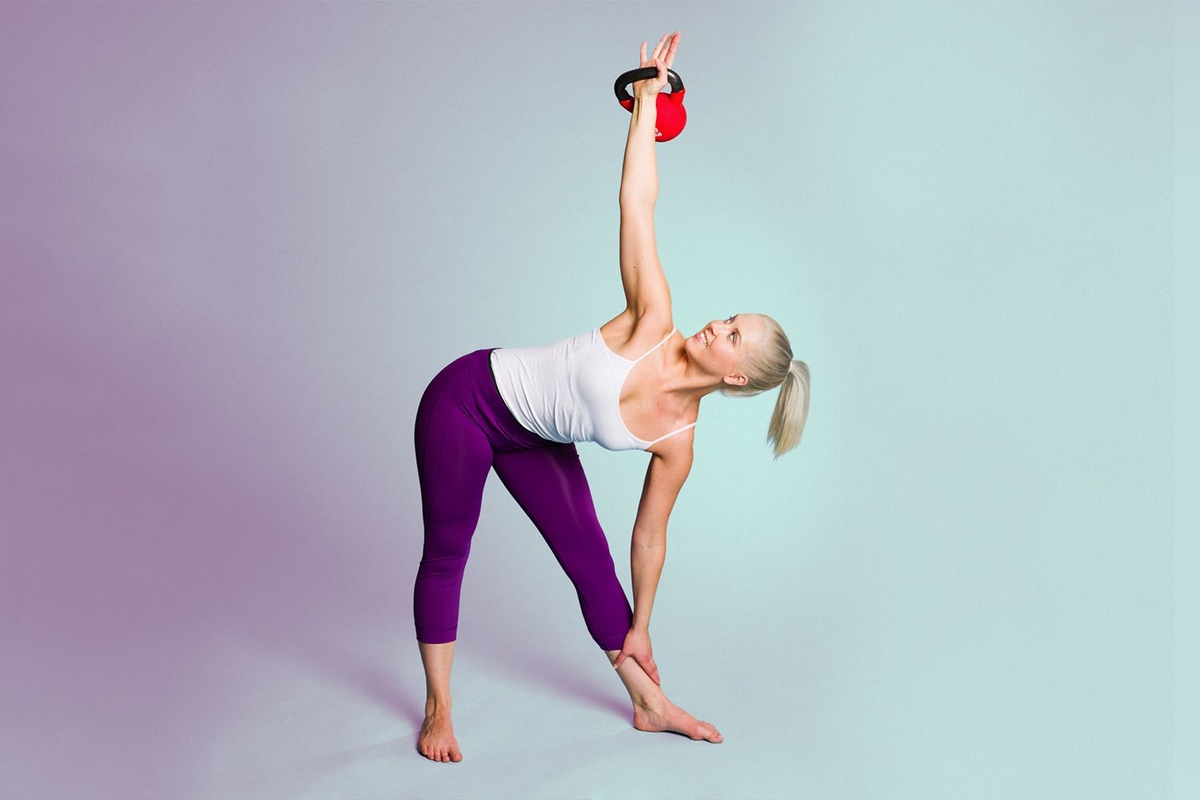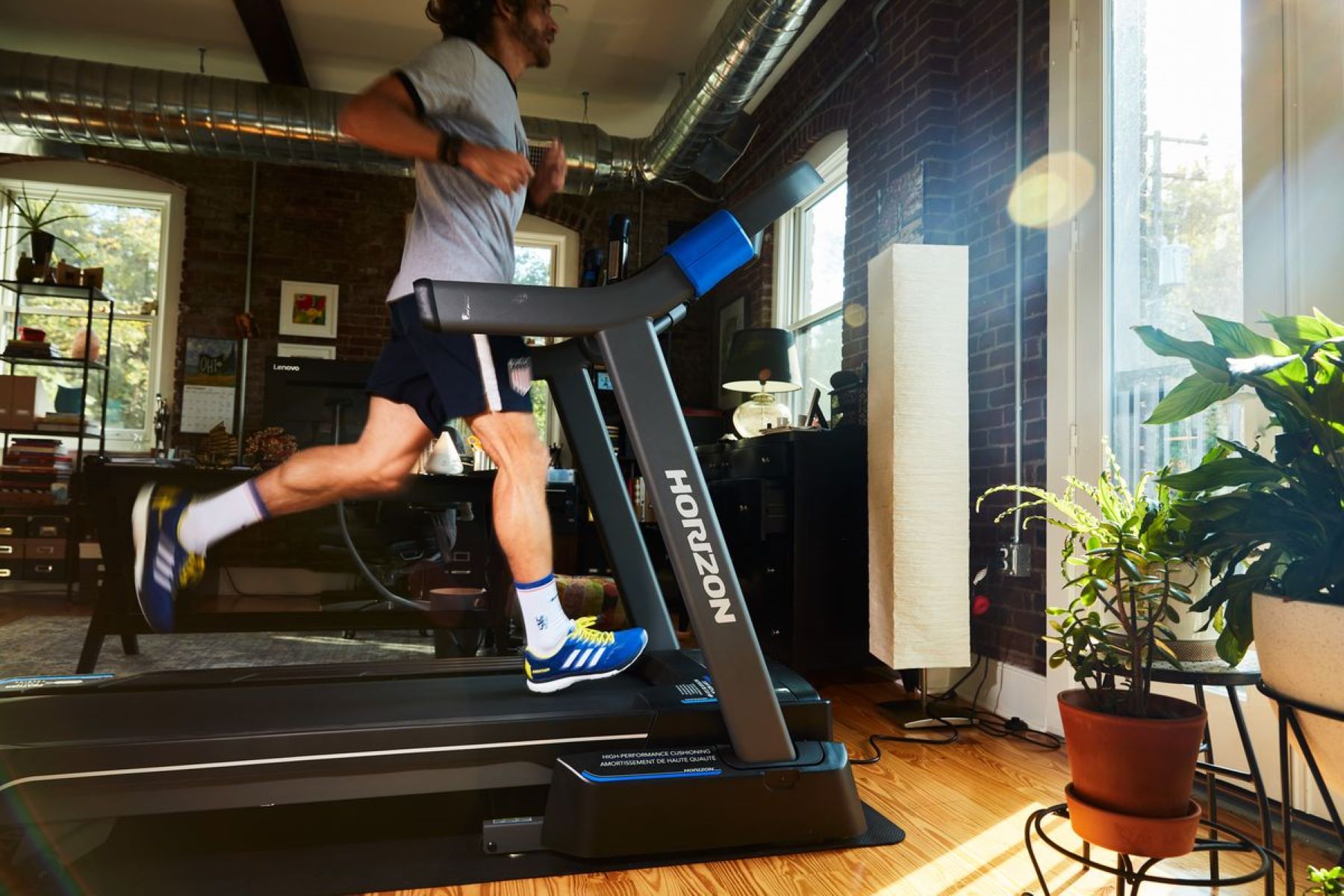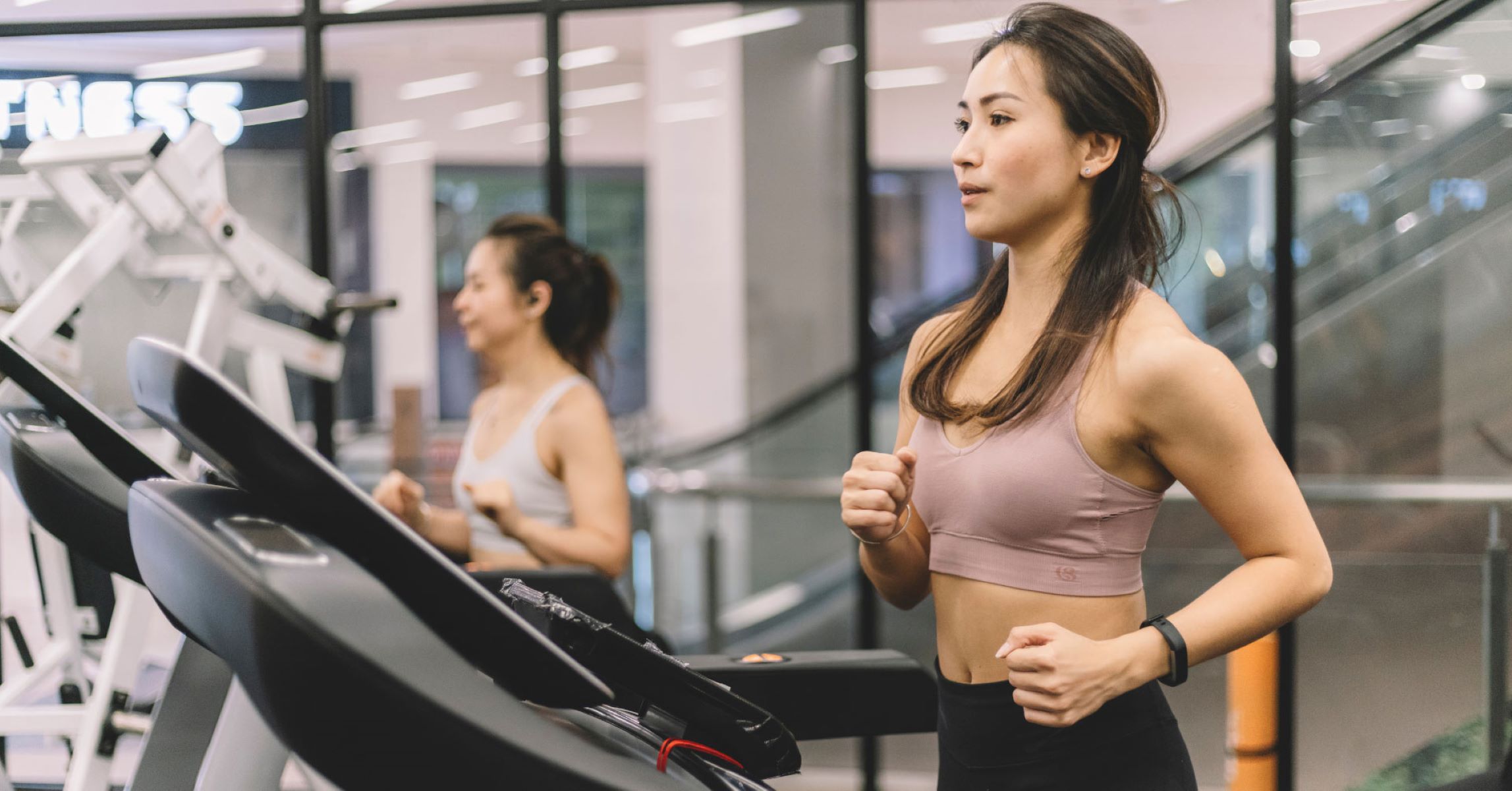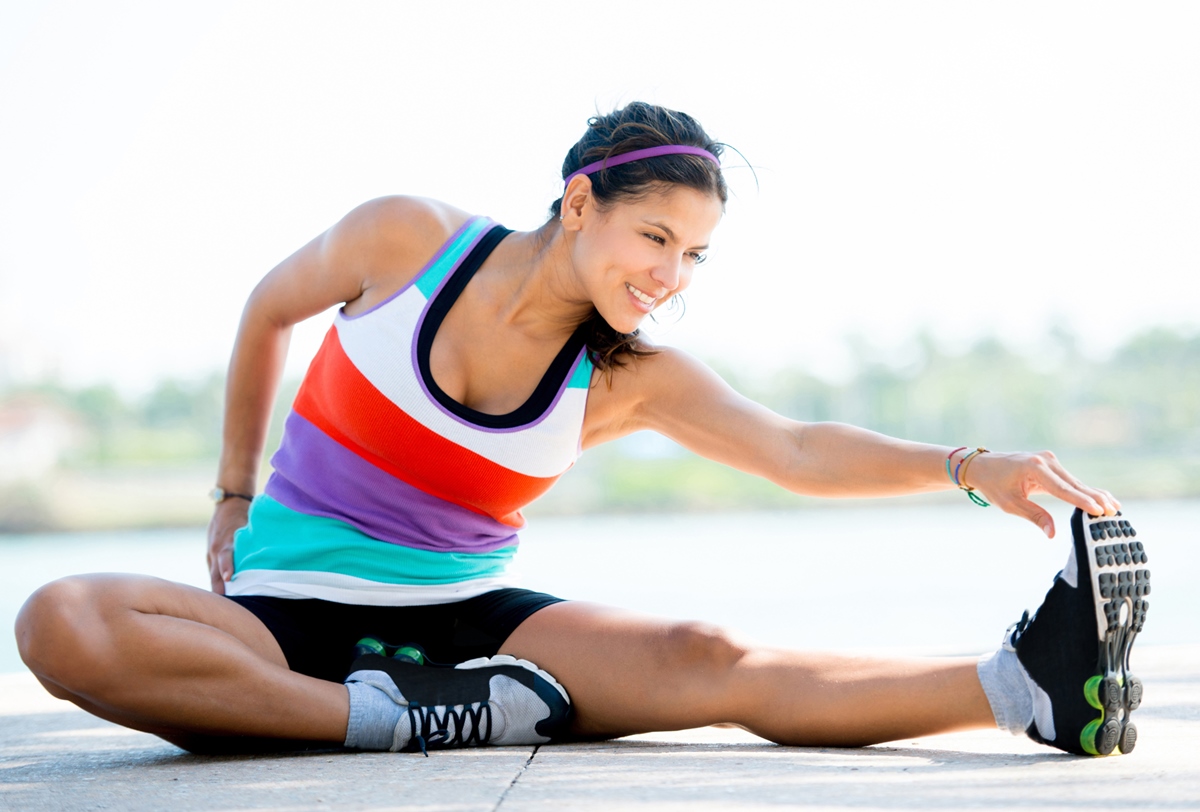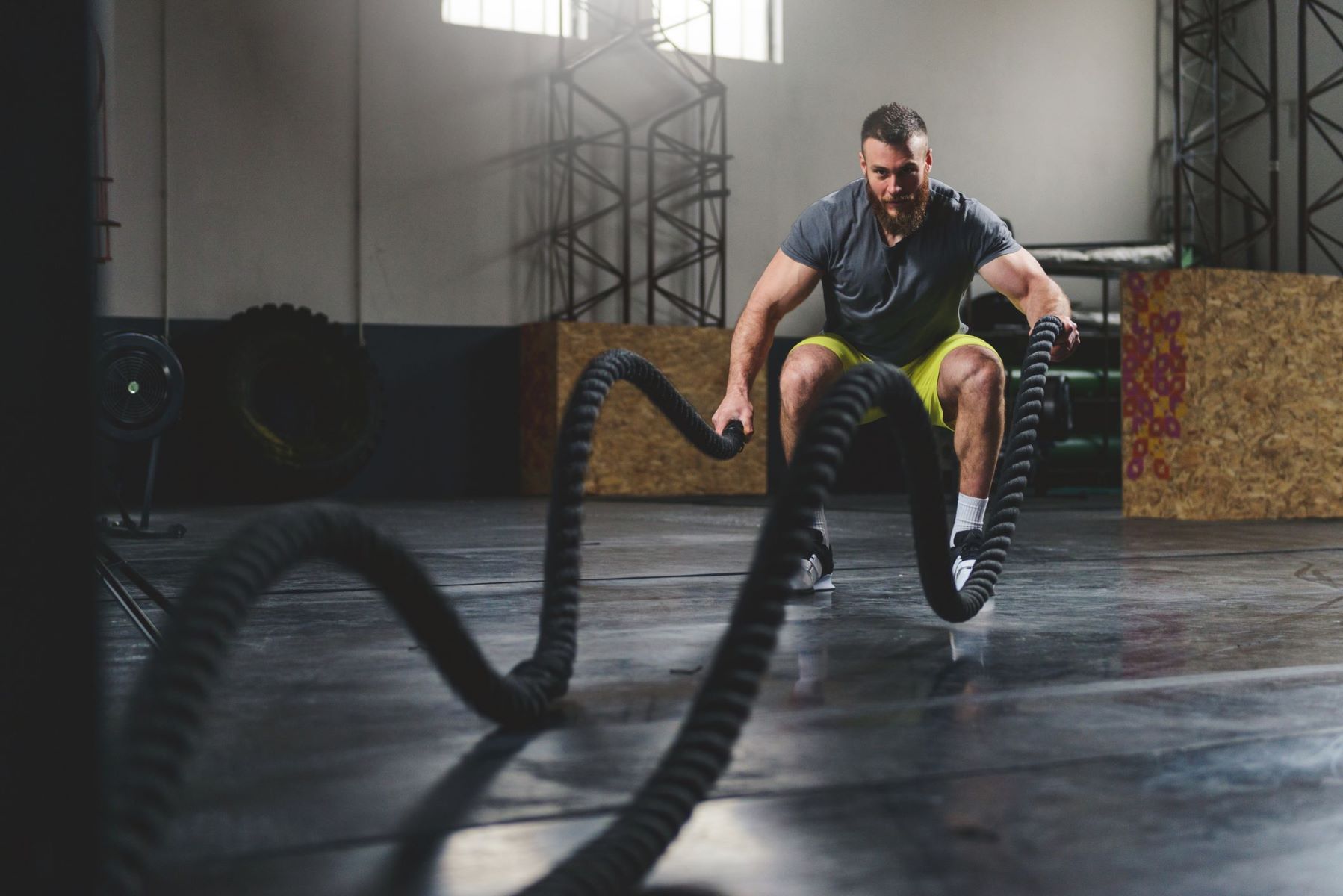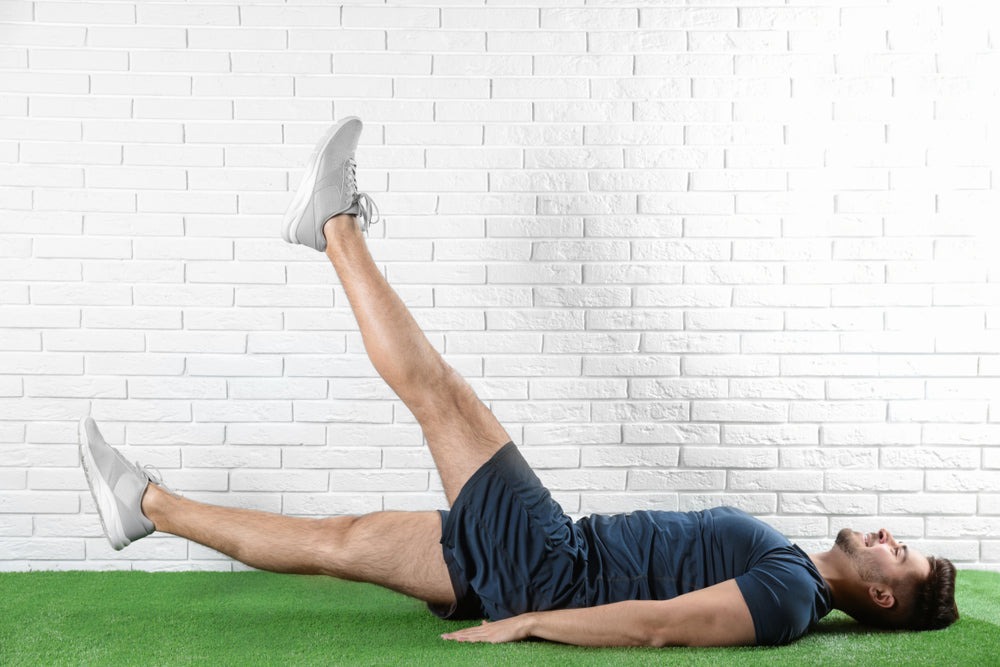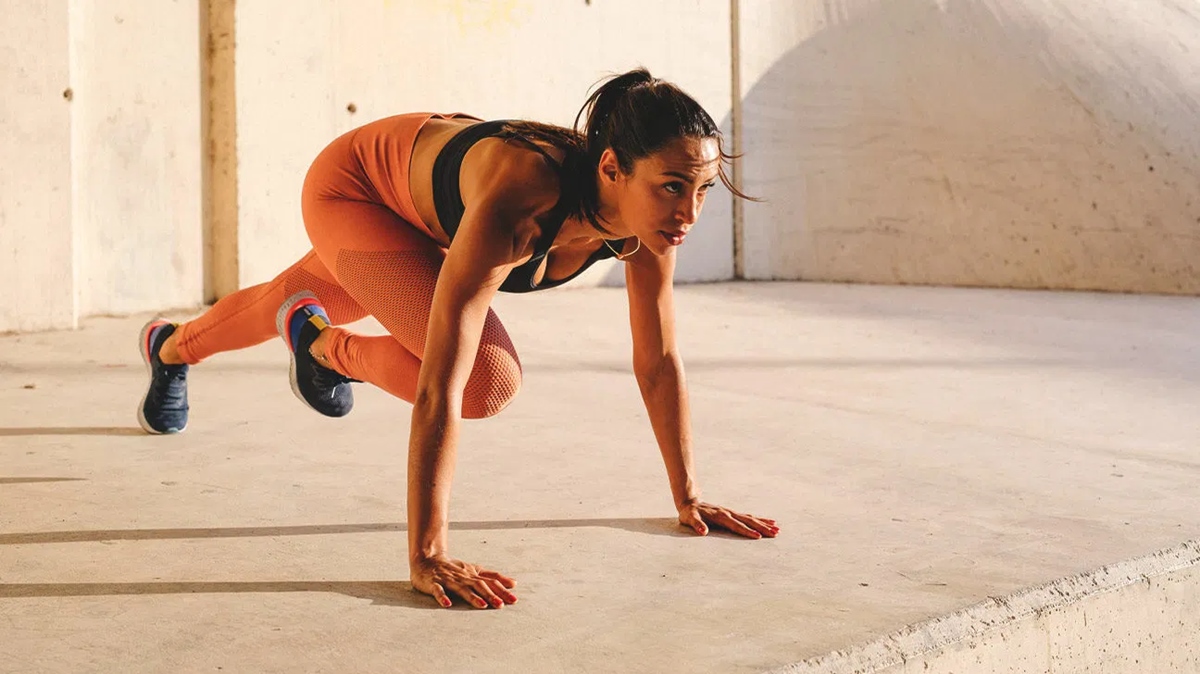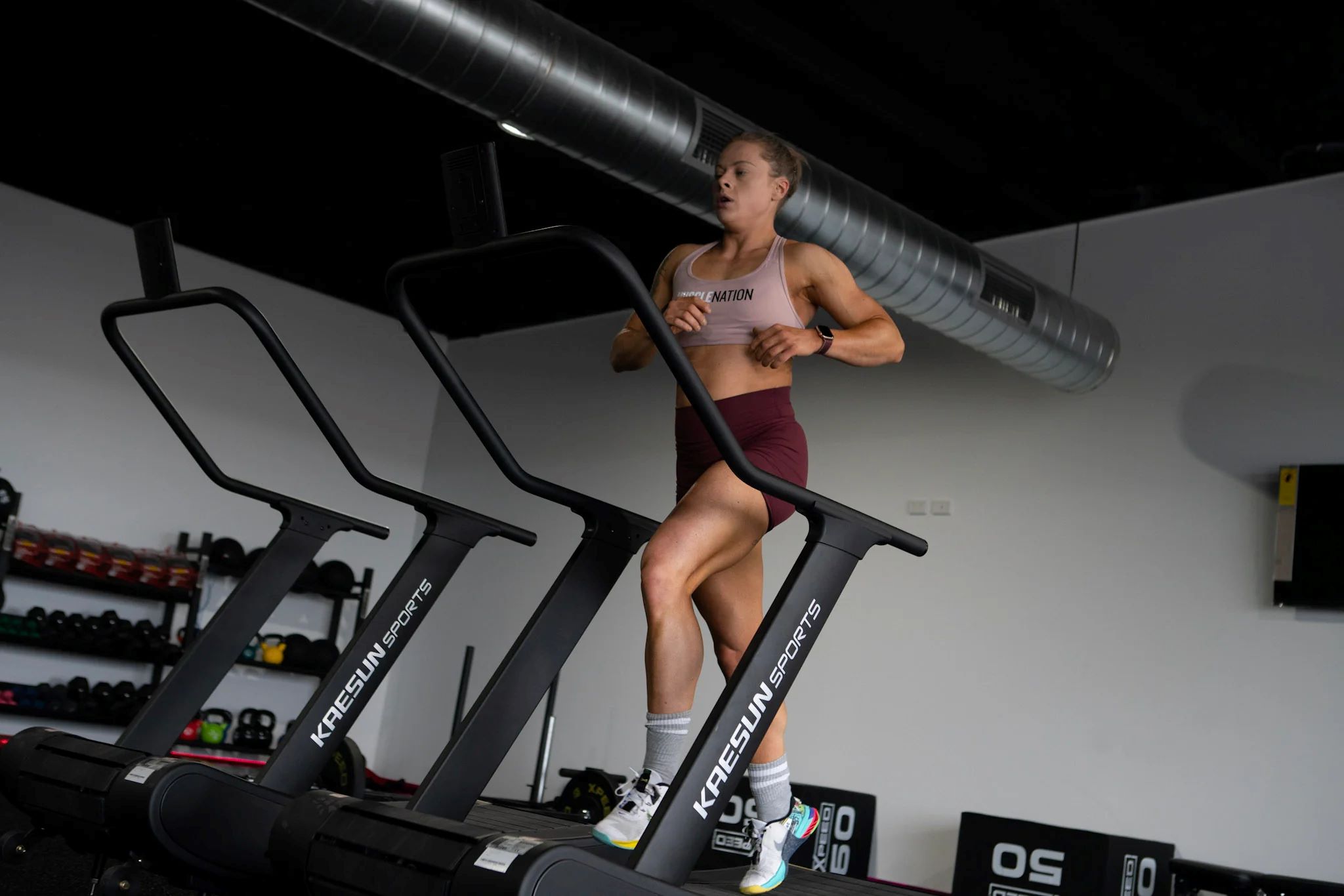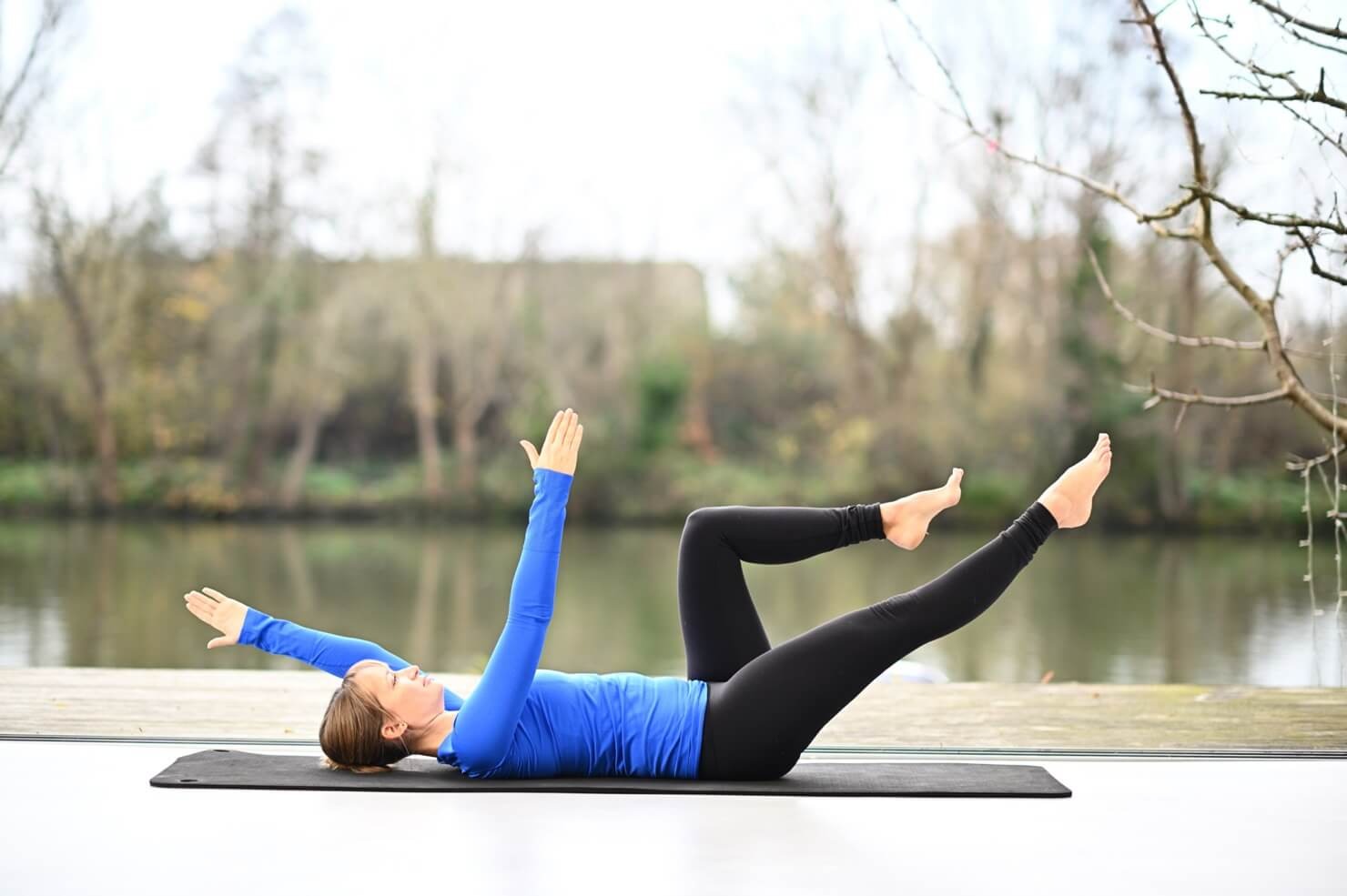

Featured
How To Stretch Arms Before Workout
Modified: January 2, 2024
Learn how to properly stretch your arms before your workout with our featured techniques. Prevent injuries and improve performance with these effective arm stretches.
Introduction
If you’re someone who enjoys working out or is involved in any kind of physical activity, you already know the importance of warming up and stretching before starting your exercise routine. While most people recognize the need to warm up their bodies, many tend to overlook the significance of specifically stretching their arms before a workout. In this article, we will explore the benefits of stretching your arms before you hit the gym, as well as provide you with some basic guidelines and effective stretches to incorporate into your warm-up routine.
Stretching your arms before a workout offers numerous advantages. First and foremost, it helps to increase blood flow and circulation throughout your arms, which in turn warms up the muscles, tendons, and ligaments. This increased blood flow ensures that your muscles are adequately supplied with oxygen and nutrients, improving their overall performance and reducing the risk of injury. Stretching also helps to enhance the flexibility and range of motion in your arms, allowing you to perform exercises with better form and efficiency. Additionally, by stretching your arms, you can alleviate muscle tension and reduce post-workout soreness.
Before we dive into the specific stretches, it is important to establish some general guidelines for stretching your arms before a workout. Firstly, it is recommended to perform arm stretches after a brief warm-up, such as jogging or jumping jacks, to raise your body temperature and make your muscles more pliable. Secondly, always remember to breathe deeply and exhale during the stretch to promote relaxation and optimize the effectiveness of the stretch. Lastly, never push yourself to the point of pain or discomfort; stretching should feel gentle and within your comfort zone.
Benefits of Stretching Arms Before Workout
Stretching your arms before a workout offers a multitude of benefits that can enhance your exercise routine and improve your overall performance. Let’s take a closer look at some of the key advantages:
- Increased blood flow: Stretching allows for increased blood flow and circulation throughout your arms. This helps to warm up the muscles, tendons, and ligaments, preparing them for the demands of your workout. Improved blood flow ensures that your muscles receive an adequate supply of oxygen and nutrients, optimizing their performance and reducing the risk of injury.
- Improved flexibility and range of motion: Stretching your arms before exercise helps to improve their flexibility and range of motion. This is particularly beneficial for exercises that involve lifting, pushing, or pulling movements. Enhanced flexibility allows you to perform exercises with better form and efficiency, reducing the strain on your muscles and joints.
- Reduced muscle tension: Engaging in regular arm stretches helps to alleviate muscle tension and relax the muscles. This is especially important if you have a sedentary lifestyle or spend extended periods in front of a computer. Stretching can counteract the tightness and stiffness that can develop in the arms and shoulders, promoting a more balanced and comfortable posture.
- Prevention of injury: By properly stretching your arms before a workout, you can significantly reduce the risk of injury. Stretching helps to warm up the muscles and joints, making them more pliable and less susceptible to strains, sprains, and tears. It also helps to improve the coordination and stability of your arms, enhancing your overall body mechanics during exercise.
- Improved recovery and reduced post-workout soreness: Stretching after your workout is just as important as stretching before. Including arm stretches in your post-workout routine can aid in reducing muscle soreness and stiffness, promoting a quicker recovery. Stretching helps to flush out metabolic waste products from the muscles and promotes the delivery of fresh nutrients and oxygen, aiding in the repair and regeneration process.
General Guidelines for Stretching Arms
Before diving into specific arm stretches, it is important to establish some general guidelines to ensure safe and effective stretching. These guidelines will help you maximize the benefits of your pre-workout stretching routine. Here are some key points to keep in mind:
- Warm up first: Prior to stretching your arms, it is advised to engage in a brief warm-up. This can include light cardio exercises such as jogging, cycling, or jumping jacks. Warm-ups increase your body temperature and blood flow, making your muscles more pliable and less prone to injury during stretching.
- Breathe deeply: During each stretch, remember to take deep breaths, inhaling through your nose and exhaling through your mouth. Deep breathing helps promote relaxation and oxygenates your muscles, enhancing the effectiveness of the stretch.
- Start gently: When beginning a stretch, start with a gentle and gradual movement. Avoid sudden or forceful motions that could strain your muscles or joints. Ease into each stretch and maintain a comfortable level of tension without experiencing any pain.
- Hold each stretch: While stretching, hold each position for about 15 to 30 seconds. This duration allows your muscles to elongate and adapt to the stretch. Avoid bouncing or jerking movements, as they can cause muscle strain or injury.
- Avoid overstretching: It is important to stretch within your range of motion and avoid pushing yourself too far. Overstretching can lead to muscle strains or tears. Listen to your body and respect its limits. As you continue to stretch regularly, you may notice increased flexibility over time.
- Stay consistent: Consistency is key when it comes to stretching. Incorporate arm stretches into your warm-up routine before every workout session. Regular stretching will help your muscles adapt and improve, enhancing your overall flexibility, range of motion, and performance.
Arm Stretches for Warm-up
Before diving into your workout, it’s essential to warm up and prepare your arms for the upcoming physical activity. Here are a few effective arm stretches that you can incorporate into your warm-up routine:
- Arm circles: Stand with your feet shoulder-width apart and extend your arms out to the sides parallel to the ground. Begin making small circular motions with your arms, gradually increasing the size of the circles. After a few rotations, reverse the direction. Arm circles engage multiple muscles in your arms and shoulders while promoting flexibility and range of motion.
- Triceps stretch: Extend one arm straight up, reaching towards the ceiling. Bend the elbow and reach your hand towards the opposite shoulder blade. With your other hand, gently pull the elbow towards your head to deepen the stretch. Hold for 15-30 seconds, then switch sides. This stretch targets the triceps muscles at the back of your upper arms.
- Shoulder rolls: Stand with your feet shoulder-width apart and relax your arms by your sides. Slowly roll your shoulders forward in a circular motion, gradually increasing the size of the circles. After a few rotations, reverse the direction. Shoulder rolls help to loosen and warm up the muscles surrounding the shoulders, preparing them for a variety of arm movements.
- Wrist circles: Extend your arms straight in front of you at shoulder height. Rotate your wrists in slow, circular motions. After a few rotations, reverse the direction. Wrist circles warm up the muscles and joints in your wrists and forearms, which are often involved in various arm exercises.
- Overhead reach: Stand with your feet hip-width apart. Extend both arms overhead, interlocking your fingers and turning your palms towards the ceiling. Reach as high as you can while keeping your shoulders relaxed. Hold for 15-30 seconds. This stretch lengthens the muscles in your arms, shoulders, and upper back, preparing them for overhead movements.
Dynamic Arm Stretches
In addition to static stretches, dynamic arm stretches are another effective way to warm up your arms before a workout. Dynamic stretches involve continuous movement, which helps to increase blood flow and improve muscle elasticity. Here are some dynamic arm stretches to incorporate into your warm-up routine:
- Arm swings: Stand with your feet shoulder-width apart. Extend your arms out to the sides parallel to the ground. Begin swinging your arms forward in a controlled motion, gradually increasing the momentum. After a few swings, switch to swinging them backward. Arm swings help to loosen up the muscles and joints in your arms while increasing the circulation and preparing them for dynamic movements.
- Push-ups: Start in a high plank position with your hands placed slightly wider than shoulder-width apart. Lower your body towards the ground by bending your elbows, keeping them close to your sides. Push back up to the starting position. Repeat this movement for a set number of repetitions. Push-ups not only engage your chest and core muscles but also warm up your shoulders, triceps, and biceps.
- Arm circles with resistance band: Hold a resistance band with both hands and extend your arms straight out in front of you. Begin making circular motions with your arms while maintaining tension on the resistance band. After a few rotations, reverse the direction. This dynamic stretch targets the muscles in your arms and shoulders while providing resistance to increase the effectiveness of the exercise.
- Medicine ball throws: Stand with your feet shoulder-width apart and hold a medicine ball with both hands at chest level. Extend your arms forward, forcefully throw the ball towards a wall or a partner, and catch it on the rebound. Repeat this movement for a set number of repetitions. Medicine ball throws engage the muscles in your arms, shoulders, and core, preparing them for explosive movements.
- Arm pumps: Stand with your feet hip-width apart and extend your arms straight out in front of you. Quickly pump your arms up and down, as if you were running in place. This exercise helps to increase blood flow, warm up the muscles in your arms, and prepare them for aerobic activities.
Arm Stretches for Flexibility
In addition to warming up your arms, incorporating stretches for flexibility into your routine can help improve your range of motion and overall arm mobility. These stretches target the muscles in your arms, shoulders, and upper back. Here are some arm stretches for flexibility:
- Behind the back stretch: Start by standing with your feet hip-width apart. Reach one arm straight across your chest and bring it towards the opposite shoulder blade, with your palm facing your back. Use your other arm to gently pull the extended arm towards your body. Hold for 15-30 seconds, then switch sides. This stretch targets the muscles in your shoulders, upper back, and chest, improving shoulder flexibility.
- Overhead triceps stretch: Extend one arm straight up, reaching towards the ceiling. Bend your elbow and reach your hand towards the opposite shoulder blade. With your other hand, gently apply pressure to the bent elbow, increasing the stretch in your triceps. Hold for 15-30 seconds, then switch sides. This stretch helps to improve flexibility in the triceps muscles at the back of your upper arms.
- Wall stretch: Stand facing a wall with your feet hip-width apart. Place both hands on the wall at shoulder height, fingers pointing up. Slowly walk your fingers up the wall while keeping your arms straight. Feel the stretch in your biceps, shoulders, and chest. Hold the final position for 15-30 seconds. This stretch targets multiple arm muscles, promoting flexibility.
- Eagle pose arms: Start by standing with your feet hip-width apart. Extend your arms straight out in front of you and cross them at the elbows, bringing one forearm to rest on top of the other. If possible, press the palms of your hands together. Hold this position for 15-30 seconds, then switch the position of your arms. The eagle pose arms stretch helps to improve flexibility in the shoulders and upper back.
- Arm and chest opener: Stand with your feet shoulder-width apart and interlace your fingers behind your back. Straighten your arms and try to lift them away from your body. Feel the stretch in your chest, shoulders, and arms. Hold this position for 15-30 seconds. This stretch targets the muscles in your chest and shoulders, enhancing arm flexibility and posture.
Precautions and Tips for Arm Stretching
While arm stretching offers numerous benefits, it is important to approach it with caution and follow these precautions and tips to ensure safety and maximize the effectiveness of your stretches:
- Warm up first: Always warm up your body before attempting any stretching exercises. Engage in light cardiovascular activity to increase blood flow and warm up your muscles. This helps to reduce the risk of injury.
- Don’t force the stretch: Avoid forcing your arm stretches beyond your comfort zone. Stretch to a point of gentle tension, but not to the point of pain. Respect your body’s limitations and gradually work towards increasing your flexibility over time.
- Breathe deeply: Remember to breathe deeply and exhale during each stretch. Deep breathing promotes relaxation, helps to oxygenate your muscles, and enhances the effectiveness of the stretch.
- Be mindful of your form: Pay attention to your body alignment and form during each stretch. Keep your shoulders relaxed, spine straight, and engage your core muscles for stability. Proper form ensures that you are targeting the intended muscles and reduces the risk of injury.
- Hold each stretch: Hold each stretch for at least 15-30 seconds to allow the muscle to elongate and adapt. Avoid bouncing or jerking movements, as they can cause muscle strain or injury.
- Stay consistent: Consistency is key when it comes to stretching. Incorporate arm stretches into your warm-up routine before every workout session. Regular stretching will help your muscles adapt and improve, enhancing your overall flexibility, range of motion, and performance.
- Listen to your body: Pay attention to how your body feels during and after stretching. If you experience any sharp pain or discomfort that persists, stop the stretch and consult with a healthcare professional.
- Vary your stretches: Incorporate a variety of arm stretches into your routine to target different muscles and avoid overuse injuries. Mix static and dynamic stretches to cater to different needs and goals.
- Gradually increase intensity: As your flexibility improves, gradually increase the intensity or duration of your stretches. Avoid sudden or drastic increases, as this can lead to muscle strain or injury.
Conclusion
Stretching your arms before a workout is not only beneficial but also essential for optimizing your performance and reducing the risk of injury. By incorporating arm stretches into your warm-up routine, you can increase blood flow, improve flexibility and range of motion, alleviate muscle tension, and enhance post-workout recovery.
Remember to follow the general guidelines for stretching your arms, including warming up before stretching, breathing deeply, starting gently, and avoiding overstretching. Additionally, dynamic arm stretches can help increase blood flow and muscle elasticity, while stretches for flexibility target specific muscles and improve range of motion.
It is important to practice arm stretching regularly and consistently, gradually increasing the intensity and duration of your stretches over time. However, always listen to your body and avoid pushing yourself beyond your limits.
Enjoy the benefits of stretching your arms before your workouts and embrace the improved performance, reduced risk of injury, and enhanced flexibility it brings. So, make arm stretching an integral part of your exercise routine and reap the rewards of stronger, more mobile arms.
